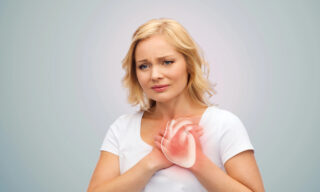
More Heart Disease, Stroke and Diabetes Articles
Understanding Gender Differences: Heart Attacks In Women

Heart attacks, medically known as myocardial infarctions, are often depicted as sudden, severe chest pain gripping a person’s left side. However, this classical portrayal predominantly reflects the male experience. Women, on the other hand, often exhibit symptoms that can be subtler and easily overlooked, leading to delayed treatment and potentially fatal consequences.
It’s crucial to recognize that heart disease is the leading cause of death in women globally. Despite this, there persists a misconception that heart attacks primarily affect men. Women are just as susceptible, albeit with differences in how symptoms manifest. Understanding these distinctions is paramount for timely intervention and improved outcomes.
One of the key differences lies in the variety and subtlety of symptoms experienced by women. While chest pain or discomfort can occur, it might not always be the predominant symptom. Women are more likely to present with atypical signs such as:
- Shortness of Breath: This could manifest as difficulty breathing, even without exertion, or feeling winded during routine activities.
- Nausea or Vomiting: Women may experience gastrointestinal symptoms like nausea, vomiting, indigestion, or abdominal discomfort, often mistaken for food poisoning or gastrointestinal issues.
- Back or Jaw Pain: Unexplained pain in the back, jaw, or neck, which may feel like pressure rather than sharp pain, is common among women experiencing heart attacks.
- Fatigue: Overwhelming fatigue, especially if it’s sudden and unrelated to physical or emotional exertion, can be a warning sign.
- Dizziness or Lightheadedness: Feeling dizzy or lightheaded, sometimes accompanied by clammy skin, can indicate compromised blood flow to the heart.
- Unexplained Sweating: Profuse sweating, often described as cold sweats, can occur during a heart attack episode.
These symptoms might appear gradually over days or weeks, rather than abruptly, which makes it easier to dismiss them as temporary discomforts. Moreover, women tend to delay seeking medical help, either due to downplaying their symptoms or attributing them to other causes like stress or aging.
The reasons behind these gender-specific differences are multifaceted. Biological factors such as hormonal fluctuations, smaller coronary arteries, and plaque distribution play a role. Additionally, societal norms and healthcare biases contribute to the underestimation of heart disease risk in women.
Empowering women with knowledge about these unique symptoms is vital. Recognizing the signs of a heart attack and seeking prompt medical attention can significantly improve survival rates and reduce long-term complications.
Heart attacks in women often present differently from those in men. Familiarizing oneself with the varied symptoms beyond typical chest pain is crucial. By raising awareness and dispelling misconceptions, we can ensure that women receive timely and appropriate care, ultimately saving lives. Remember, when it comes to heart health, knowledge is indeed power.
Other Articles You May Find of Interest...
- Gaining Personal Confidence and Function after Stroke Rehabilitation
- Understanding Gender Differences: Heart Attacks In Women
- Diabetic Foot Care For Summer
- Take care of heart health after 40s
- Causes and Treatments For Hypertension and Heart Attacks
- Heart Health at Your Fingertips: The Revolution of Remote Cardiac Monitoring
- Your Heart’s Best Support This Year! The 9 Pillars To Prevent Heart Disease

















